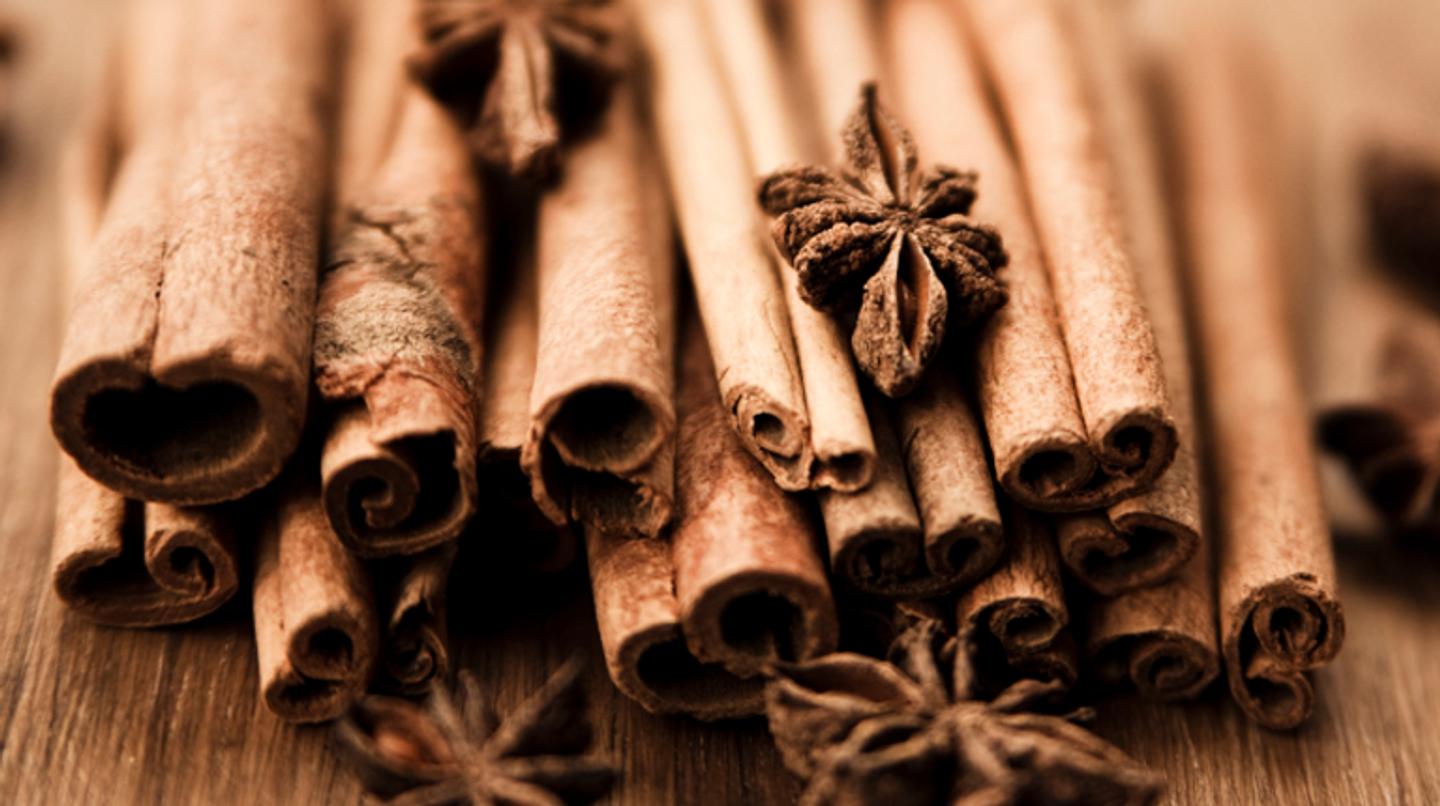
The comforting spice that makes everything nice
BY: Andrea Nakayama
DATE: 2021-12-20
“Some foods are so comforting, so nourishing of body and soul, that to eat them is to be home again after a long journey. To eat such a meal is to remember that, though the world is full of knives and storms, the body is built for kindness. The angels, who know no hunger, have never been as satisfied.”
—Eli Brown, Cinnamon and Gunpowder
Comfort.
Take a moment to consider the word.
Go ahead, close your eyes.
When you think of comfort, what food comes to mind?
It’s odd to me that the phrase ‘comfort food’ is now associated with the sticky, sickly sweet, gooey or cheesy. All things that defy comfort to me (and my body).
When I close my eyes and think of the foods that connote comfort, they’re the foods I grew up with, the foods that were familiar in my childhood—foods like stuffed cabbage, chicken soup, mandelbrot (the Yiddish name for a biscotti-like delight), and cinnamon toast.
Did any of your comfort foods have a hint of cinnamon?
Nearly all of mine did.
As we move into the holidays, let’s uncover the culinary and medicinal uses of this colorful spice. Honestly, it’s a perfect time to think about comfort in relation to the beneficial sprinkles that adorn and flavor our holiday foods!.
And even if you no longer eat the dishes you associate with comfort, please don’t let that stop you from “returning home” this holiday season. The spices of your all-time favorites may just help conjure up all the nourishing comfort you’re seeking.
Get creative and spice it up!
Whether you’re a seasoned spice user or rarely venture beyond basic salt and pepper, there’s so much to explore in the world of spice. (They really do make everything nice!)
And during this season you’ll notice, the spicy recipes I like to share have a theme…
One of my favorite ways to include spices and other superfoods are in warming elixirs. If you’re wondering what an elixir is, it’s a cozy, magical, and medicinal (non alcoholic!) drink.Whether they’re part of my morning ritual, an afternoon pick-me-up, or a sleepy-time treat, elixirs are always a hit in my house and I aim to share my cinnamon-infused secrets with you and add a little zest to your day (in the form of a fragrant and warming cuppa).
Cinnamon is likely not new to you.
In fact, if you have one spice in your spice rack (besides salt and pepper), it’s likely cinnamon!Even if this spice easily makes its way off the rack into your food, you might not know that it goes well beyond just making baked goods more tasty and toast a pure delicacy. This super-powered spice actually helps to balance your blood sugar, reduce inflammation and help fight infections. (Give me a sprinkle now please!)
We can find mentions of cinnamon being used as food and medicine in the Bible and ancient Egypt. It’s rumored to be more precious than gold in ancient times and was often a gift for the kings!
This now common spice comes from the reddish-brown inner bark of the cinnamon tree called Cinnamomum. The bark is dried and rolled into a tube called a quill (or stick) and then ground into powder for the form that’s most common on grocery store shelves.
The scent and flavor that’s so specific to cinnamon (and might have your family coming to the kitchen when you’re baking cinnamon-spiced treats), comes from the plant oils that are rich in the compound cinnamaldehyde.
Those compounds not only tickle your tastebuds but are also behind cinnamon’s powerful effects on your health and metabolism.
Perhaps ironically, this spice that’s such a common addition to sweet desserts can also help balance your blood sugar, reduce insulin resistance and decrease the risk of developing metabolic syndrome and type 2 diabetes.
One study on cinnamon (among many!), showed that adding 1 gram of cinnamon to your diet per day for three months helped reduce Hemoglobin A1C levels. (That’s the long term measure of blood sugar that’s considered in the diagnosis of diabetes.) Be sure to note the comments at the bottom of this post before trying this at home.
It’s thought that cinnamon mimics the action of insulin and may stimulate the insulin receptors on fat and muscle cells the same way insulin does, allowing excess sugar to move out of the blood and into the cells.
Cinnamon is rich in antioxidants that help reduce inflammation in the body making a cinnamon-spiced smoothie super for sipping after a hard workout or long day.
This super spice comes to the rescue to help decrease the risk of heart disease by reducing levels of LDL cholesterol and triglycerides and also lower blood pressure.
In addition to a happy heart, cinnamon can also boost brain health. Two compounds found in cinnamon appear to inhibit the buildup of the protein that is a hallmark of Alzheimer’s disease.
And cinnamaldehyde, the active compound in cinnamon, can fight bacteria like Listeria and Salmonella and helps treat fungal infections like Candida. It’s anti-microbrial effects can even help keep your pearly whites free from decay and your breath smelling fresh.
Ready to sign up for more cinnamon? I sure am!
Apple Cinnamon Elixir
You can use cinnamon throughout the year but it’s sweet and spicy taste and warming nature is especially nice to chase the chill during these colder months.
Try this elixir that pairs a winter favorite (apples!) with cinnamon and other superfoods. Make yourself a mug, curl up in a cozy blanket by the fire, and keep warm from the inside out.
Ingredients
2 cups strong red rooibos tea, hot
1 cup full-fat coconut milk or cashew milk
2 cinnamon sticks (plus two for garnish)
1 tsp ground cinnamon
1 tsp maca (optional)
1 Tbsp raw apple cider vinegar
1 small, sweet apple, chopped
1 Tbsp collagen (optional)
liquid stevia (around 5 drops) or raw honey to taste
Preparation
Steep tea for 5-10 minutes.
In a small saucepan, gently simmer milk, cinnamon sticks (snapped in pieces), ground cinnamon, and maca (if using) for 5 minutes.
Remove cinnamon sticks and blend simmered cinnamon milk, chopped apple, apple cider vinegar, and collagen (if using) until smooth.
Add to brewed tea and sweeten to taste. Top with sliced apple and an additional cinnamon stick if desired.
This recipe serves one large mug or two small. You can decide if you’re willing to share it with a favorite friend or prefer to keep it all for yourself. (I won’t tell!)
If you do plan to experiment a bit more with cinnamon (which I hope you do), put it on your to-list to treat yourself to a new jar, especially if your cinnamon has been hidden in your pantry and gathering dust for more than a year. Most dried spices are best if you enjoy them within six months and cinnamon is the same. It should smell slightly sweet when you open the container.
Your nose will know if it’s fresh and everyone in your house will come running when you heat it in a sweet or savory dish.
Here’s to sweet cinnamon dreams.
Ten tips to add more cinnamon
Sprinkle cinnamon on your morning gluten-free toast, pancakes or breakfast bowl (I’ve always been a cinnamon toast girl myself)
Add a teaspoon or two of cinnamon to your favorite smoothie
Make a simple cinnamon tea by simmering cinnamon sticks in water and adding a splash of nut milk and a touch of stevia or raw honey
Make a mix of cinnamon-kissed roasted veggies like sweet potatoes, butternut squash and golden beets
Cook up a curry with coconut milk, cinnamon and other warming spices
Simmer a whole cinnamon stick in your favorite soups or stews
Sprinkle cinnamon and freshly squeezed lemon juice on apples for a sensational snack
Make a rub for meats with cinnamon, cardamom, black pepper, and other warming spices
Add cinnamon to your morning oats, no-oats, or other gluten-free grain dishes
Give a cinnamon-twist to your black beans and use them in soups, stews or burritos
Cinnamon pairs nicely with a number of other spices! Consider allspice, cardamom, chili, cloves, coriander, cumin, ginger, nutmeg, anise and turmeric. Where you use these, throw in a dash of cinnamon too!
What’s in a name?
You might have seen cinnamon with exotic sounding names and wondered which to choose. There are generally two main types of culinary cinnamon available, Ceylon cinnamon and the more common Cassia cinnamon.
Cassia is what you’ll likely find on the supermarket shelf and it may be any of the following species of cinnamon:
Cinnamomum burmannii (also called called Indonesian or Java Cinnamon)
Cinnamomum cassia (also called Chinese Cinnamon)
Cinnamomum loureiroi (also called Vietnamese or Saigon Cinnamon)
These cassia varieties all contain larger amounts of a compound called coumarin, which may be harmful in larger doses. It’s likely fine in the amount used in home cooking but worth noting! (Please do not go on any cinnamon diets to try to manage your blood sugar without support of a qualified practitioner.)
A better option for taste and health is Ceylon cinnamon (also called Sri Lanka cinnamon or “true cinnamon”). Studies show that this form is much lower in coumarin than the Cassia variety. And Ceylon has a sweeter, more refined taste than its Cassia cousins, making it worth the extra investment. You may need to seek out a local spice store, ethnic market, or order online to gather up this Ceylon cinnamon gem.
Read more from the Functional Nutrition Alliance
Functional Nutrition Tool: Sleep Assessment
Functional Nutrition Tip: The Power of STORY
References
Kizilaslan N, Erdem NZ. The Effect of Different Amounts of Cinnamon Consumption on Blood Glucose in Healthy Adult Individuals.Int J Food Sci. 2019;2019:4138534. Published 2019 Mar 4. doi:10.1155/2019/4138534
Rao PV, Gan SH. Cinnamon: a multifaceted medicinal plant.Evid Based Complement Alternat Med. 2014;2014:642942. doi:10.1155/2014/642942
Nabavi SF, Di Lorenzo A, Izadi M, Sobarzo-Sánchez E, Daglia M, Nabavi SM. Antibacterial Effects of Cinnamon: From Farm to Food, Cosmetic and Pharmaceutical Industries.Nutrients. 2015;7(9):7729-7748. Published 2015 Sep 11. doi:10.3390/nu7095359
Kawatra P, Rajagopalan R. Cinnamon: Mystic powers of a minute ingredient.Pharmacognosy Res. 2015;7(Suppl 1):S1-S6. doi:10.4103/0974-8490.157990
Anderson RA, Zhan Z, Luo R, et al. Cinnamon extract lowers glucose, insulin and cholesterol in people with elevated serum glucose. J Tradit Complement Med. 2015;6(4):332-336. Published 2015 Apr 18. doi:10.1016/j.jtcme.2015.03.005
Yulug B, Cankaya S. Translational perspective: is cinnamon a suitable agent for cognitive impairment and Alzheimer’s disease associated with brain trauma?.Neural Regen Res. 2019;14(8):1372-1373. doi:10.4103/1673-5374.253518

By: Andrea Nakayama, FxNA Founder & Functional Medicine Nutritionist
Functional Nutrition Alliance provides the comprehensive online Functional Nutrition training in the Science & Art of the Functional Nutrition practice. Learn to address the roots of your clients’ suffering with client education, diet & lifestyle modifications.